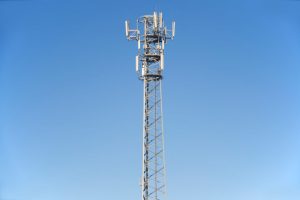
MEO Satellites: Revolutionizing Global Connectivity with Medium Earth Orbit Technology – MEO Satellites
MEO satellites, or Medium Earth Orbit satellites, are a type of satellite that operates in an orbit between 2,000 and 36,000 kilometers above the Earth’s surface. This orbit is significantly lower than the Geostationary Orbit (GEO) used by traditional telecommunications satellites, which are parked at an altitude of approximately 36,000 kilometers. The lower orbit of MEO satellites allows them to offer several advantages over their GEO counterparts, including faster signal transmission times, higher bandwidth, and more precise navigation capabilities.
The use of MEO satellites is becoming increasingly popular for a variety of applications, including telecommunications, navigation, and Earth observation. One of the primary benefits of MEO satellites is their ability to provide global coverage with a smaller number of satellites than would be required in a GEO constellation. This is because MEO satellites can see a larger portion of the Earth’s surface from their lower orbit, allowing them to provide service to a wider area with fewer satellites.
Another significant advantage of MEO satellites is their lower latency compared to GEO satellites. Because they are closer to the Earth, signals transmitted to and from MEO satellites have a shorter distance to travel, resulting in faster transmission times. This makes MEO satellites particularly well-suited for applications that require real-time communication, such as video conferencing, online gaming, and remote healthcare.
In terms of specific applications, MEO satellites are being used for a range of purposes, including broadband internet access, mobile communications, and navigation. For example, the O3b (Other 3 Billion) satellite constellation, which consists of 20 MEO satellites, provides high-speed internet connectivity to underserved communities around the world. Similarly, the IRIDIUM satellite constellation, which comprises 66 MEO satellites, offers global mobile communications services, including voice, data, and messaging.
How MEO Satellites Work
MEO satellites work by transmitting and receiving signals to and from Earth-based stations or other satellites. They typically operate in the Ka-band or Ku-band frequency ranges, which offer high bandwidth and are less prone to interference than lower frequency bands. The satellites are equipped with transponders, which receive and retransmit signals, as well as antennas, which transmit and receive the signals.
The lower orbit of MEO satellites requires them to move more quickly than GEO satellites, which can remain stationary above a fixed point on the Earth’s surface. As a result, MEO satellites must be tracked and communicated with by a network of ground stations, which can be located around the world. This network of ground stations allows MEO satellites to maintain continuous communication with the Earth, even as they move rapidly through their orbits.
One of the key challenges associated with MEO satellites is their limited visibility from any given point on the Earth’s surface. Because they are in a lower orbit, MEO satellites can only be seen from a particular location on the Earth for a short period of time, typically around 10-15 minutes. This requires a large number of satellites to be deployed in order to provide continuous coverage, as well as a sophisticated network of ground stations to track and communicate with the satellites.
Benefits and Challenges of MEO Satellites
The benefits of MEO satellites are numerous and significant. They offer faster signal transmission times, higher bandwidth, and more precise navigation capabilities than traditional GEO satellites. They also have the potential to provide global coverage with a smaller number of satellites, reducing the cost and complexity of satellite constellations.
However, MEO satellites also present several challenges, including the need for a large number of satellites to provide continuous coverage, as well as the requirement for sophisticated ground stations to track and communicate with the satellites. Additionally, the lower orbit of MEO satellites requires them to be designed and built to withstand the harsh conditions of space, including intense radiation and extreme temperatures.
Despite these challenges, the use of MEO satellites is becoming increasingly popular, driven by advances in technology and the growing demand for fast, reliable, and global connectivity. As the satellite industry continues to evolve, it is likely that MEO satellites will play an increasingly important role in providing critical communications services and enabling new applications and innovations.
Conclusion
In conclusion, MEO satellites are revolutionizing the way we communicate and access data globally, offering faster and more reliable connections than traditional GEO satellites. With their lower latency, higher bandwidth, and more precise navigation capabilities, MEO satellites are well-suited for a range of applications, including telecommunications, navigation, and Earth observation. While they present several challenges, including the need for a large number of satellites and sophisticated ground stations, the benefits of MEO satellites make them an attractive option for companies and organizations seeking to provide global connectivity and enable new innovations.



